Collection overview
The WHR Rivers and Arthur M Hocart 1908, New Georgia group, British Solomon Islands Protectorate Cylinder Collection (C108) comprises fourteen wax cylinders recorded in 1908 by Dr WHR Rivers and Arthur M. Hocart on the islands of Simbo and Vella Lavella in the New Georgia Group of the Solomon Islands.
These recordings are not available online as participatory research and community consultation are still ongoing in the Solomon Islands.
Research by Vicky Barnecutt, British Library.
Simbo Recordings
These recordings consist of group and solo songs, and panpipe music. As far as we know, all these recordings come from Simbo. The language of Simbo is Simbo [sbb], spoken today by around 2,700 people (Eberhard et al 2021:22). Two recordings, C108/1410 and the second track of C108/1413, may feature the Touo [tqu] language (Mbanyata/Baniata/Mbaniata, spoken by 1870 people (Eberhard et al 2021:24).
The recordings from Simbo were probably made in July 1908. Hocart made notes on music at some point before 26 July 1908, as there are notes on music that relate to some of these recordings earlier in his notebooks (pp. 508–511) than the date of 26 July 1908 (p. 585 of Hocart field notebook).
| British Library shelfmark | Recording title | Performer name | Recording location | Recording date | Content description | Performer description | Recording notes | Languages | Genre | Recordist | Recording length | Recording trip | Description of cylinder | Collection title | Cylinder location | Images of cylinder containers / documentation | Related print publication: | Related print publication: | Related print publication: | Related print publication: | Related print publication: | Related print publication: |
|---|---|---|---|---|---|---|---|---|---|---|---|---|---|---|---|---|---|---|---|---|---|---|
| C108/1406 | Yoni Yoni Kamerani | Unidentified (chorus) | Simbo Island, Western Province, British Solomon Islands Protectorate | 14 May 1908 – 01 January 1909 | 1. Announcement: "Yoni Yoni Kamerani[?]". 2. Ref tone. 3. Unaccompanied vocal group singing in harmony. This is probably goni, a traditional song or genre on Simbo. Kamerani indicates that it is the old style of this kind of song. | Simbo culture, Solomon Islands | Reasonable quality recording but with surface noise. | Simbo | Field recordings | Hocart, Arthur Maurice (1883-1939); Rivers, William Halse Rivers (1864-1922) | 2'43" | Percy Sladen Trust Expedition to the Solomon Islands, 1908 | Brown wax cylinder | WHR Rivers and Arthur M Hocart 1908 New Georgia Group, British Solomon Islands Protectorate Cylinder Collection | British Library |  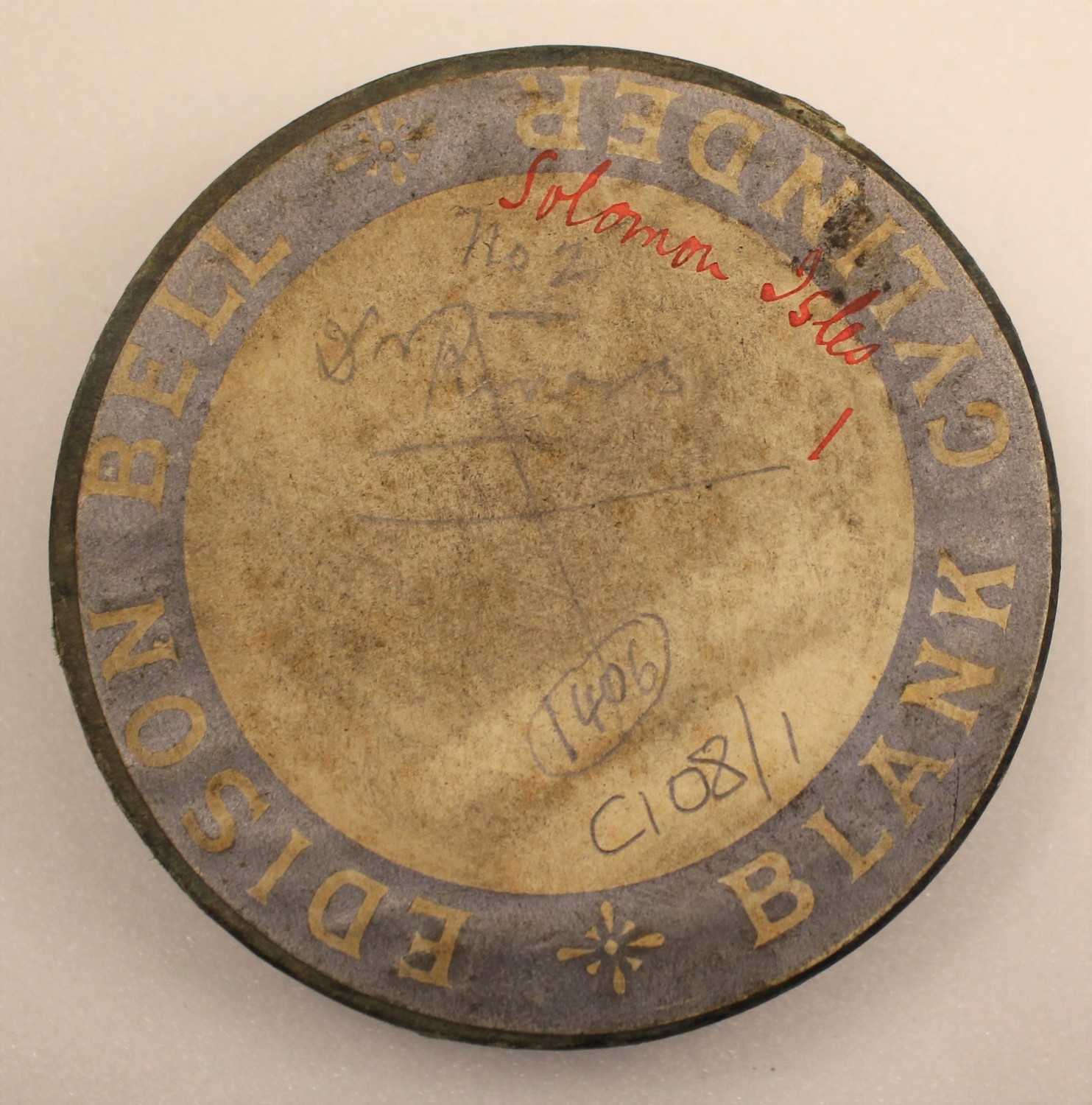     | Information on the goni songs can be found in A.M. Hocart's undated manuscript 'Music' in MS-Papers-0060, Alexander Turnbull Library, Wellington, New Zealand. | |||||
| C108/1407 | Panpipes | Unidentified (wind duet / pan pipes) | Simbo Island, Western Province, British Solomon Islands Protectorate | 14 May 1908 – 02 January 1909 | 1. Indecipherable announcement. 2. Ref note. 3. Unaccompanied panpipe duet. 4. Ascending panpipe scales. This may be the suke instrument of Simbo. Suke consisted of two bamboo pipes, one larger one smaller. | Simbo culture, Solomon Islands | Reasonable quality recording but with surface noise. | Simbo | Field recordings | Hocart, Arthur Maurice (1883-1939); Rivers, William Halse Rivers (1864-1922) | 2'51" | Percy Sladen Trust Expedition to the Solomon Islands, 1908 | Brown wax cylinder | WHR Rivers and Arthur M Hocart 1908 New Georgia Group, British Solomon Islands Protectorate Cylinder Collection | British Library | 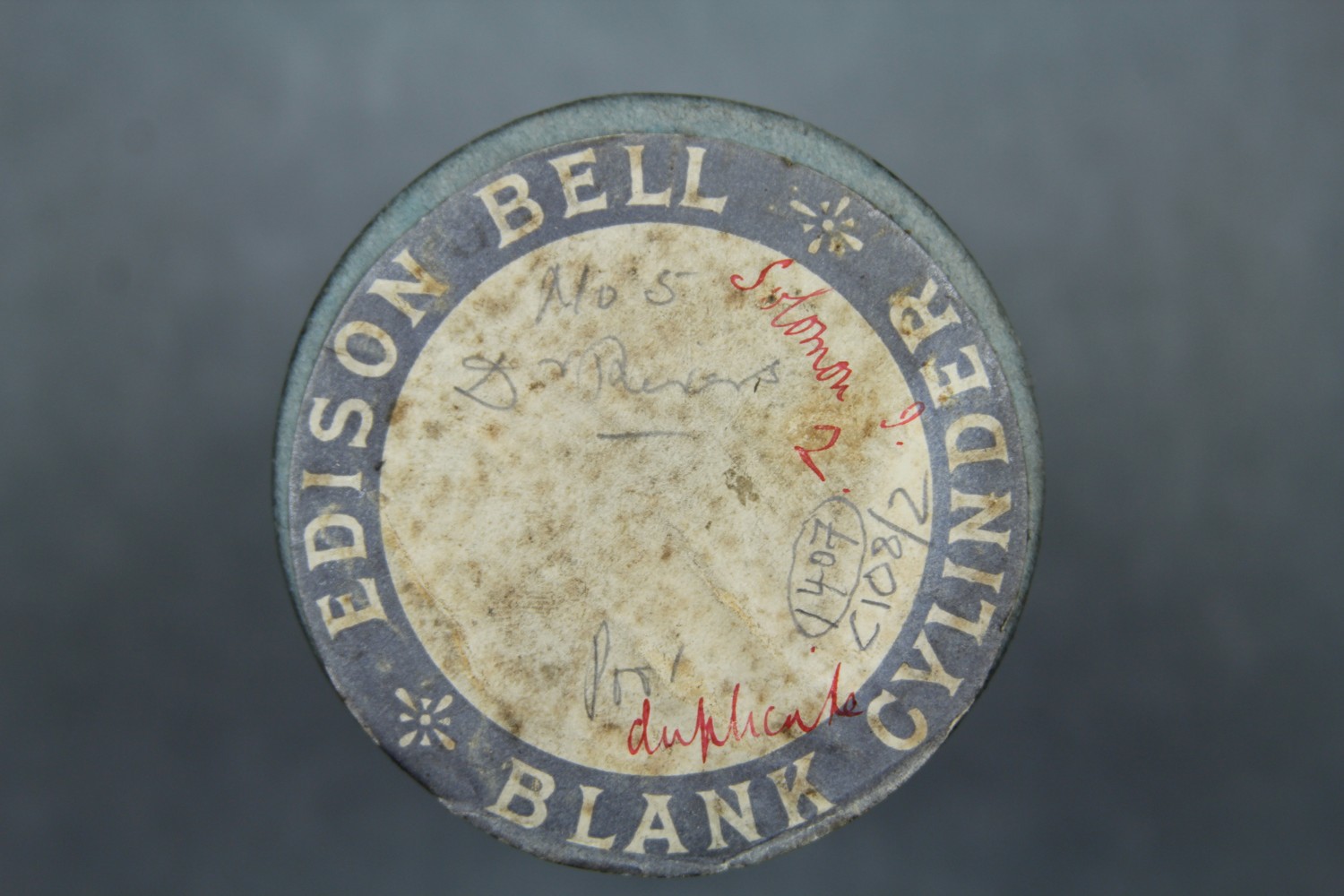      | The suke is described and pictured in Hocart (1931:318). Arthur Maurice Hocart. 1931. ‘Warfare in Eddystone of the Solomon Islands’. The Journal of the Royal Anthropological Institute of Great Britain and Ireland 61:301–324. | |||||
| C108/1409 | Yoni Yoni | Unidentified (chorus) | Simbo Island, Western Province, British Solomon Islands Protectorate | 14 May 1908 – 03 January 1909 | 1. Ref note. 2. Announcement: "Yoni Yoni[?]." 3. Unaccompanied vocal group singing in harmony. This is probably goni, a traditional song or genre on Simbo. | Simbo culture, Solomon Islands | Reasonable quality recording. | Simbo | Field recordings | Hocart, Arthur Maurice (1883-1939); Rivers, William Halse Rivers (1864-1922) | 2'40" | Percy Sladen Trust Expedition to the Solomon Islands, 1908 | Brown wax cylinder | WHR Rivers and Arthur M Hocart 1908 New Georgia Group, British Solomon Islands Protectorate Cylinder Collection | British Library | 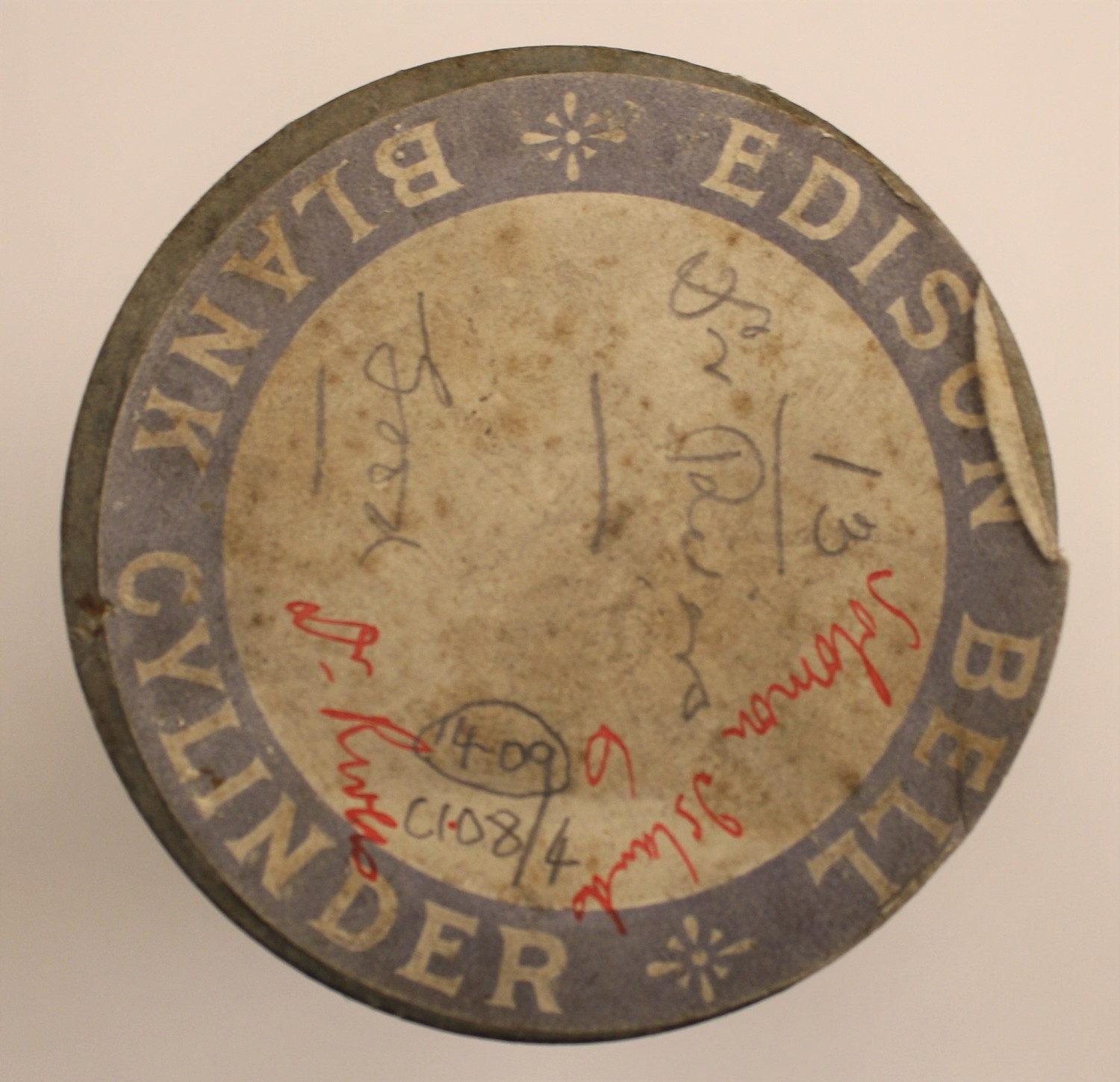      | Information on the goni songs can be found in A.M. Hocart's undated manuscript 'Music' in MS-Papers-0060, Alexander Turnbull Library, Wellington, New Zealand. | |||||
| C108/1410 | Baniatta, Simbo | Unidentified (chorus) | Simbo Island, Western Province, British Solomon Islands Protectorate | 14 May 1908 – 04 January 1909 | 1. Announcement: "Baniatta, Simbo". 2. Ref note. 3-4. Unaccompanied vocal group singing in harmony. These are probably mbanyata songs that had been brought to Simbo by men from the Baniata or Touo language area of south-west Rendova Island. | Simbo culture, Solomon Islands | Reasonable quality recording but with fluctuating speeds. | Simbo, Touo | Field recordings | Hocart, Arthur Maurice (1883-1939); Rivers, William Halse Rivers (1864-1922) | 2'41" | Percy Sladen Trust Expedition to the Solomon Islands, 1908 | Brown wax cylinder | WHR Rivers and Arthur M Hocart 1908 New Georgia Group, British Solomon Islands Protectorate Cylinder Collection | British Library |       | Information on the mbanyata songs can be found in A.M. Hocart's undated manuscript 'Music' in MS-Papers-0060, Alexander Turnbull Library, Wellington, New Zealand. | |||||
| C108/1412 | Kera Ite | Unidentified (chorus) | Simbo Island, Western Province, British Solomon Islands Protectorate | 14 May 1908 – 05 January 1909 | 1. Ref note. 2. "Kera Ite". 3. Unaccompanied vocal group singing in harmony. The kera ite songs were described as "small songs" from Simbo. | Simbo culture, Solomon Islands | Reasonable quality recording. | Simbo | Field recordings | Hocart, Arthur Maurice (1883-1939); Rivers, William Halse Rivers (1864-1922) | 2'32" | Percy Sladen Trust Expedition to the Solomon Islands, 1908 | Brown wax cylinder | WHR Rivers and Arthur M Hocart 1908 New Georgia Group, British Solomon Islands Protectorate Cylinder Collection | British Library | 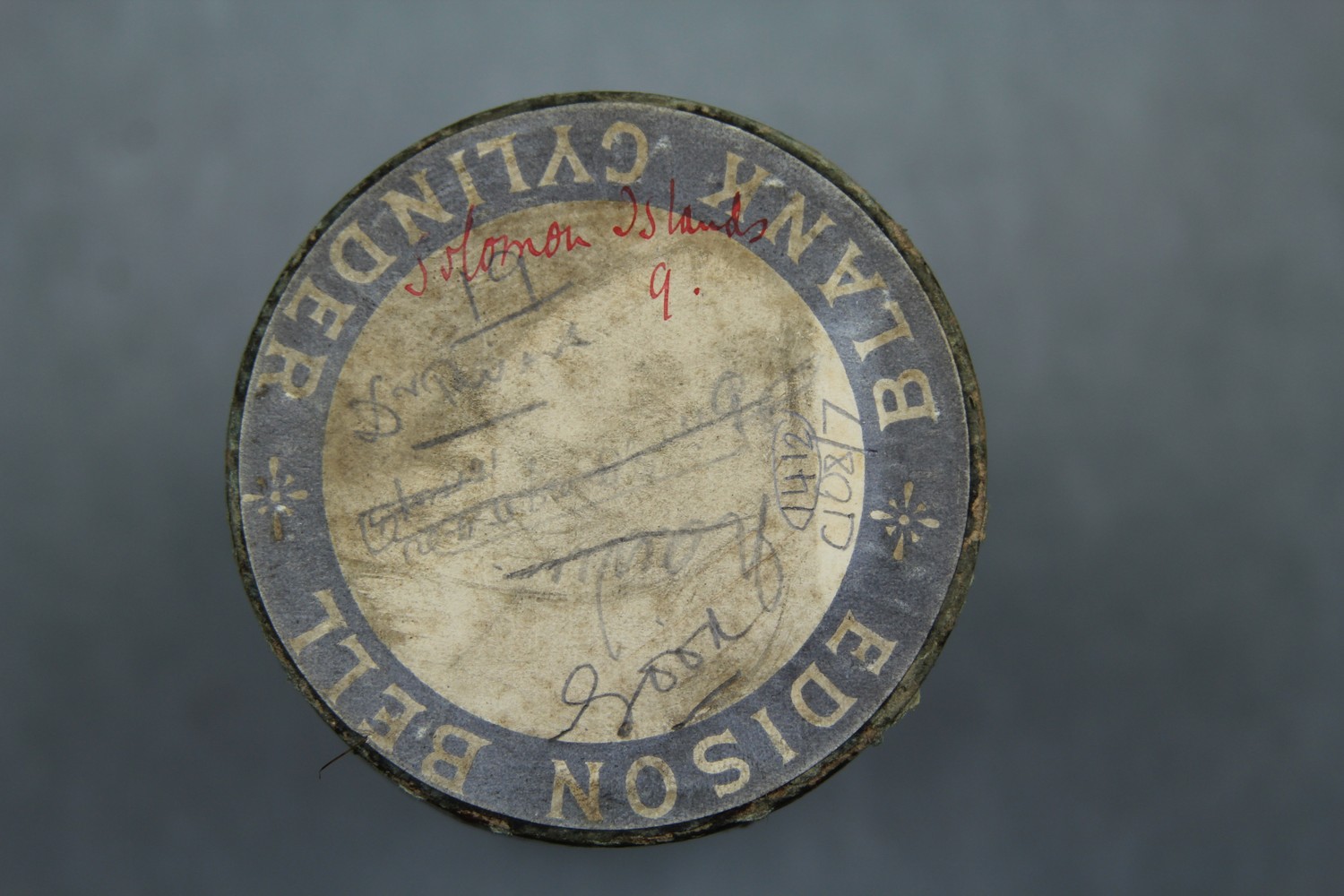 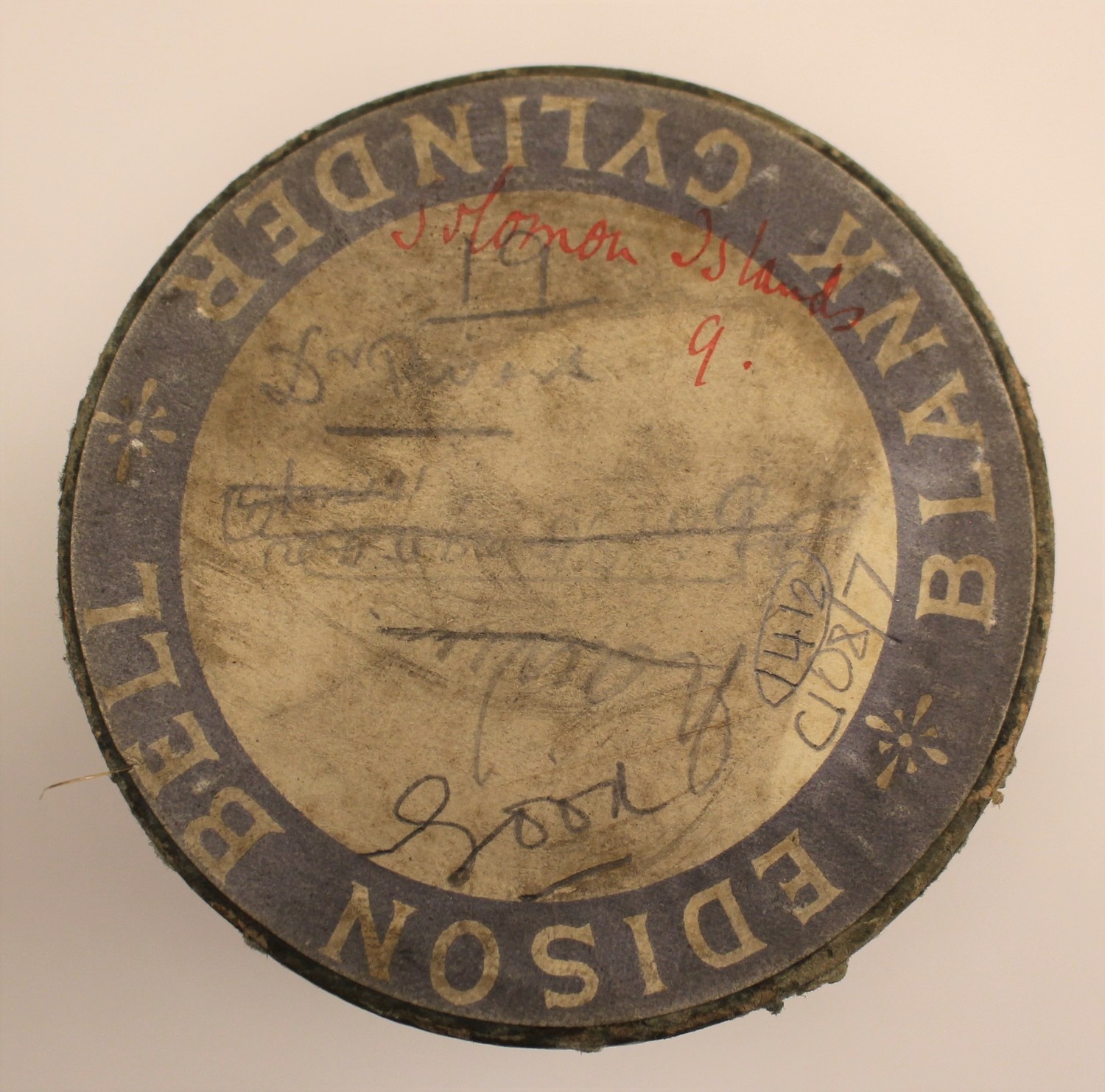     | Information on the kera ite songs can be found in A.M. Hocart's undated manuscript 'Music' in MS-Papers-0060, Alexander Turnbull Library, Wellington, New Zealand. | |||||
| C108/1413 | Kera Ite, Simbo and Baniatta | Unidentified (chorus); unidentified (singer) | Simbo Island, Western Province, British Solomon Islands Protectorate | 14 May 1908 – 06 January 1909 | 1. Announcement: "Kera Ite, Simbo." The first song is a kera ite song, described as "small songs" from Simbo. 2. Ref note. 3. Unaccompanied vocal group. The second is probably an mbanyata song that had been brought to Simbo by men from the Baniata or Touo language area of south-west Rendova Island. 4. "Baniatta." 5. Unaccompanied vocal solo. | Simbo culture, Solomon Islands | Reasonable quality recording but with speed fluctuations throughout. | Simbo, Touo | Field recordings | Hocart, Arthur Maurice (1883-1939); Rivers, William Halse Rivers (1864-1922) | 3'43" | Percy Sladen Trust Expedition to the Solomon Islands, 1908 | Brown wax cylinder | WHR Rivers and Arthur M Hocart 1908 New Georgia Group, British Solomon Islands Protectorate Cylinder Collection | British Library |   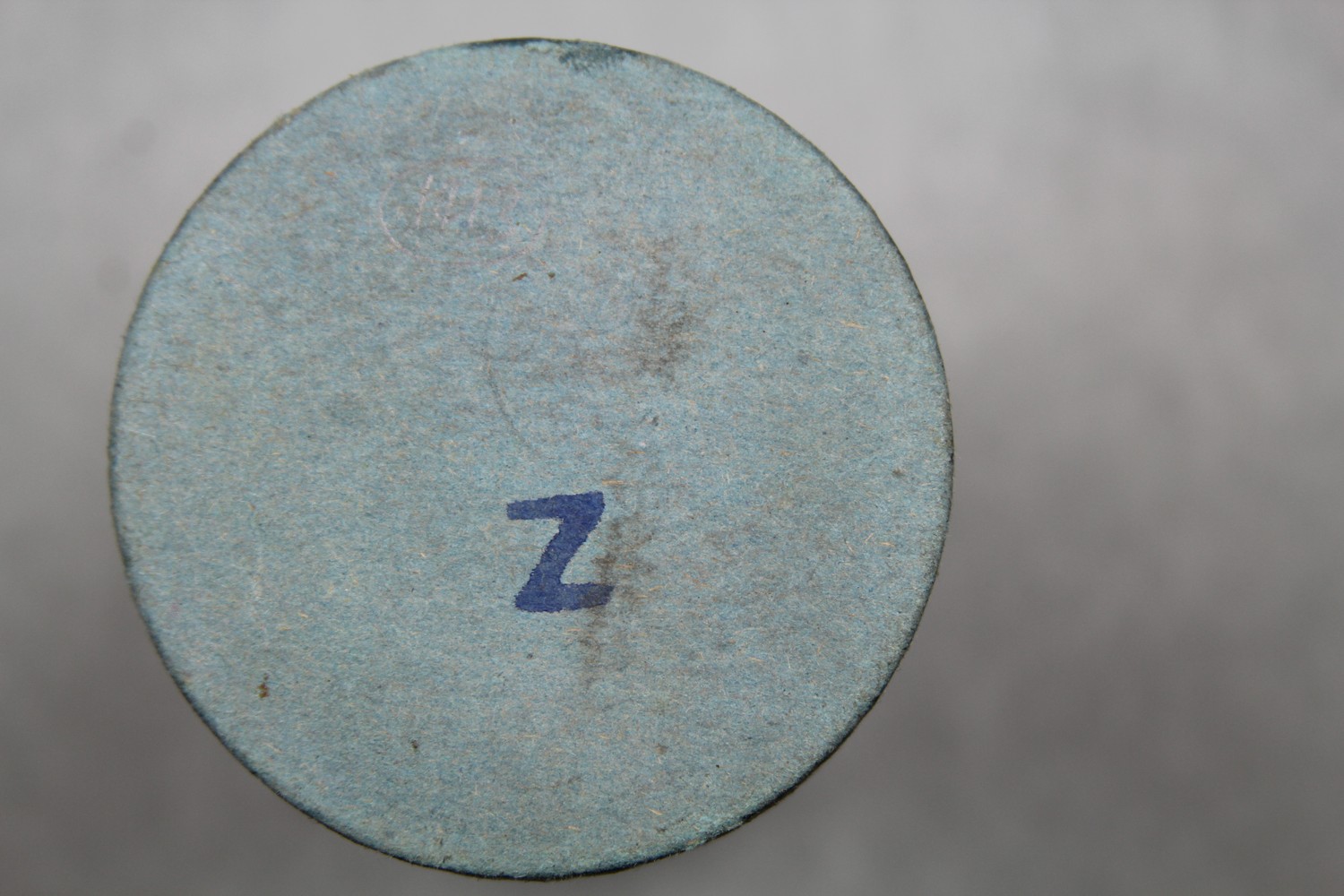    | Information on the mbanyata and kera ite songs can be found in A.M. Hocart's undated manuscript 'Music' in MS-Papers-0060, Alexander Turnbull Library, Wellington, New Zealand. | |||||
| C108/1408 | Unknown | Unidentified | Only the lid from the original cylinder box remains. | Percy Sladen Trust Expedition to the Solomon Islands, 1908 | Missing (lid only) | WHR Rivers and Arthur M Hocart 1908 New Georgia Group, British Solomon Islands Protectorate Cylinder Collection | British Library | 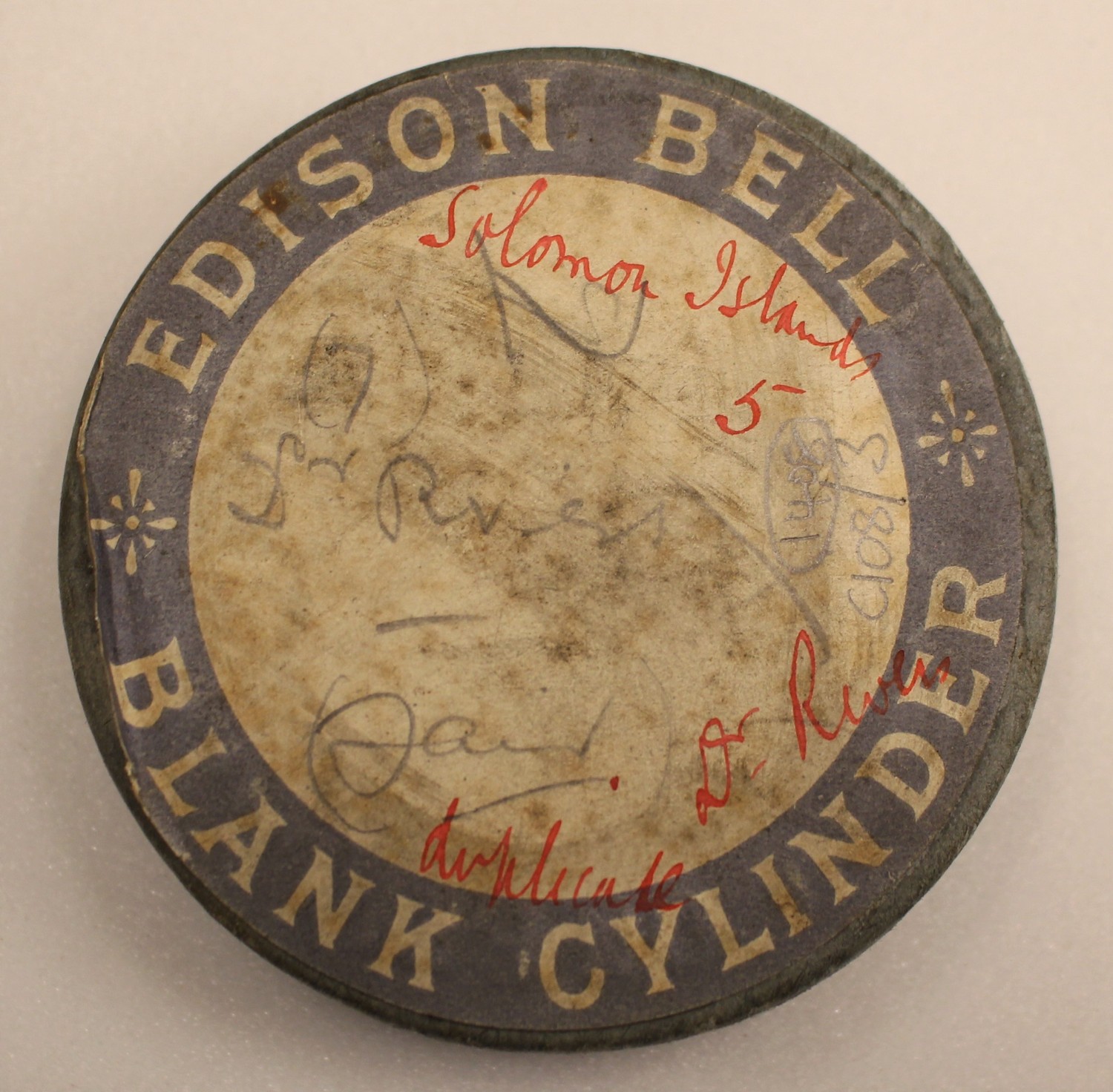      | Notes on some of these recordings can be found in A.M. Hocart's undated manuscript 'Music' in MS-Papers-0060, Alexander Turnbull Library, Wellington, New Zealand. | |||||||||||||
| C108/1411 | Unknown | Unidentified | Only the lid from the original cylinder box remains. | Percy Sladen Trust Expedition to the Solomon Islands, 1908 | Missing (lid only) | WHR Rivers and Arthur M Hocart 1908 New Georgia Group, British Solomon Islands Protectorate Cylinder Collection | British Library |       | Notes on some of these recordings can be found in A.M. Hocart's undated manuscript 'Music' in MS-Papers-0060, Alexander Turnbull Library, Wellington, New Zealand. | |||||||||||||
| C108/1414 | Unknown | Unidentified | Only the lid from the original cylinder box remains. | Percy Sladen Trust Expedition to the Solomon Islands, 1908 | Missing (lid only) | WHR Rivers and Arthur M Hocart 1908 New Georgia Group, British Solomon Islands Protectorate Cylinder Collection | British Library |       | Notes on some of these recordings can be found in A.M. Hocart's undated manuscript 'Music' in MS-Papers-0060, Alexander Turnbull Library, Wellington, New Zealand. | |||||||||||||
| C108/381 | Ghoni Simbo [1] | Mbana (singer, male); unidentified (singer) | Simbo Island, Western Province, British Solomon Islands Protectorate | 14 May 1908 – 05 January 1909 | 1. Ref note. 2. Male vocal group. 3. Indecipherable announcement. 4. Unaccompanied male vocal group. This is probably goni, a traditional song or genre on Simbo. | Simbo culture, Solomon Islands | Reasonable quality recording but with weak signal and surface noise. | Simbo | Field recordings | Hocart, Arthur Maurice (1883-1939); Rivers, William Halse Rivers (1864-1922) | 2'34" | Percy Sladen Trust Expedition to the Solomon Islands, 1908 | Brown wax cylinder | WHR Rivers and Arthur M Hocart 1908 New Georgia Group, British Solomon Islands Protectorate Cylinder Collection | British Library | 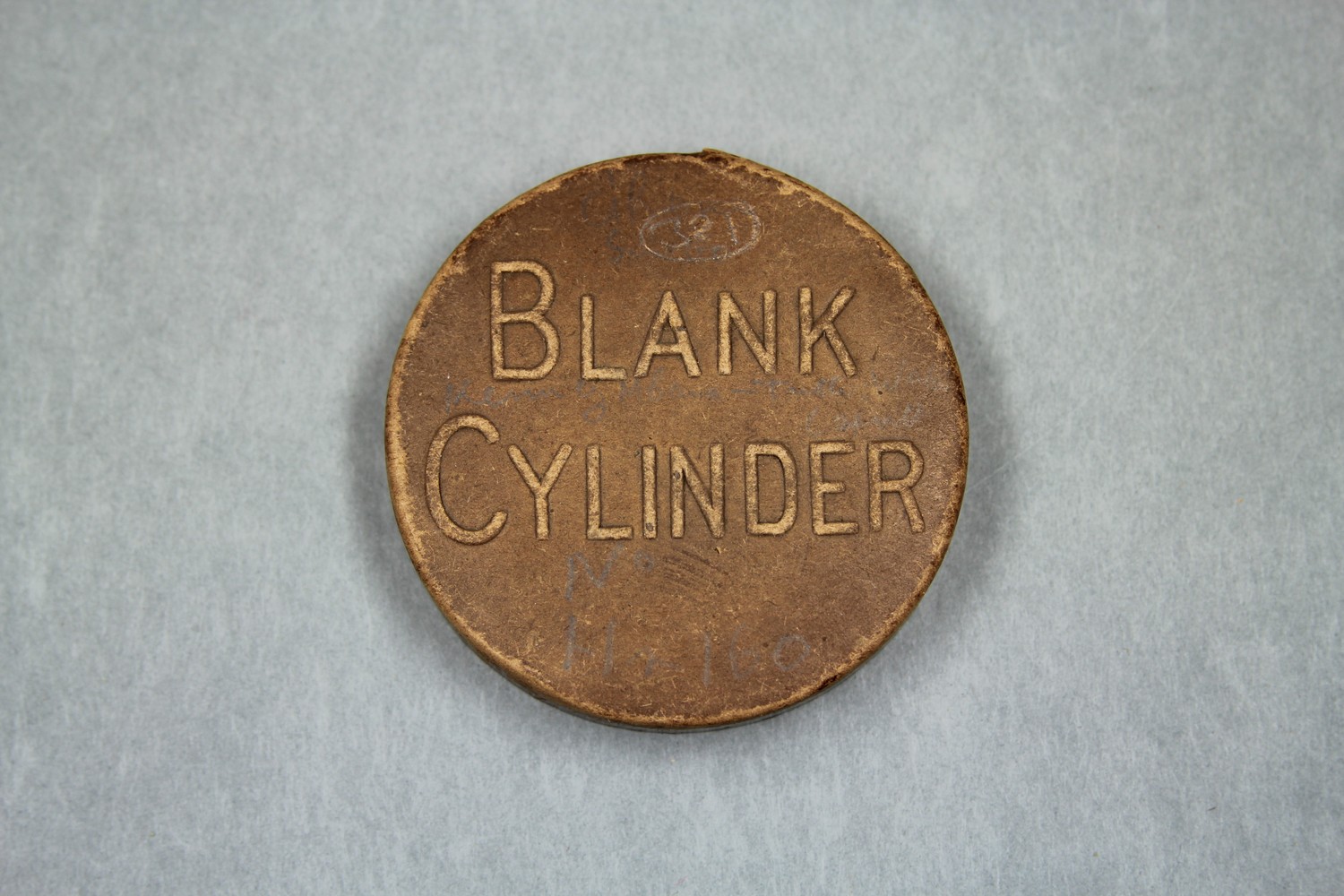 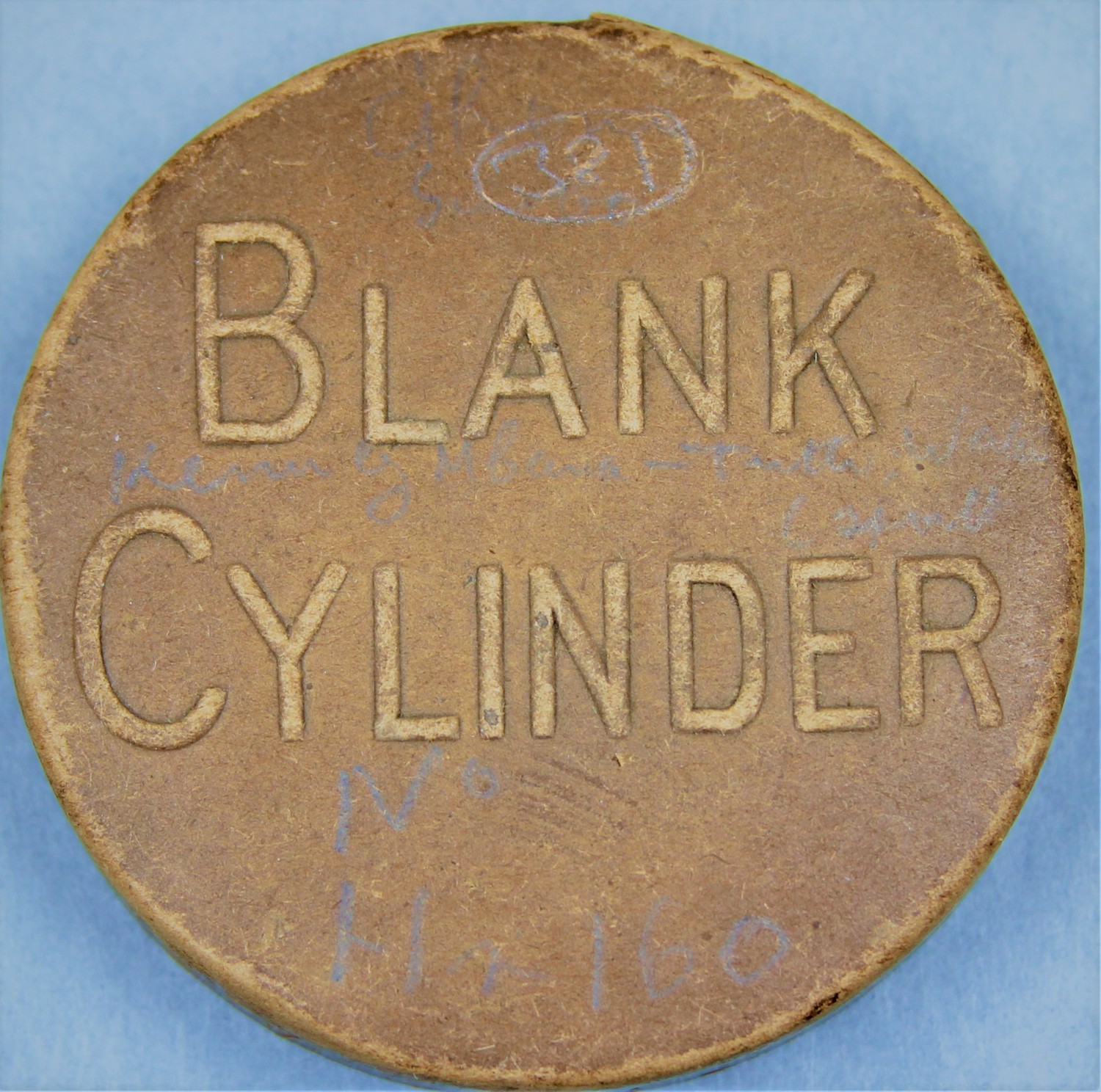 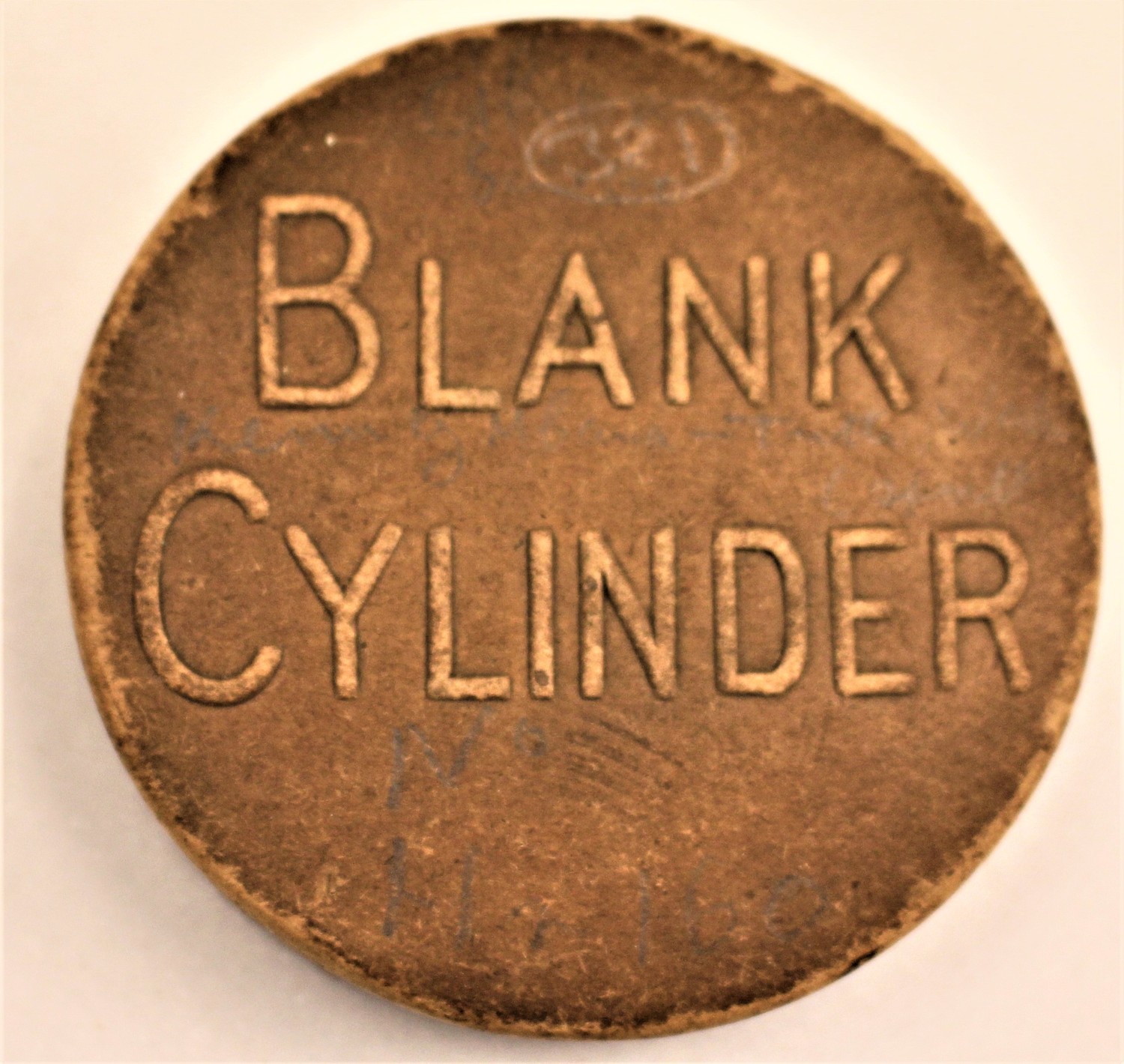 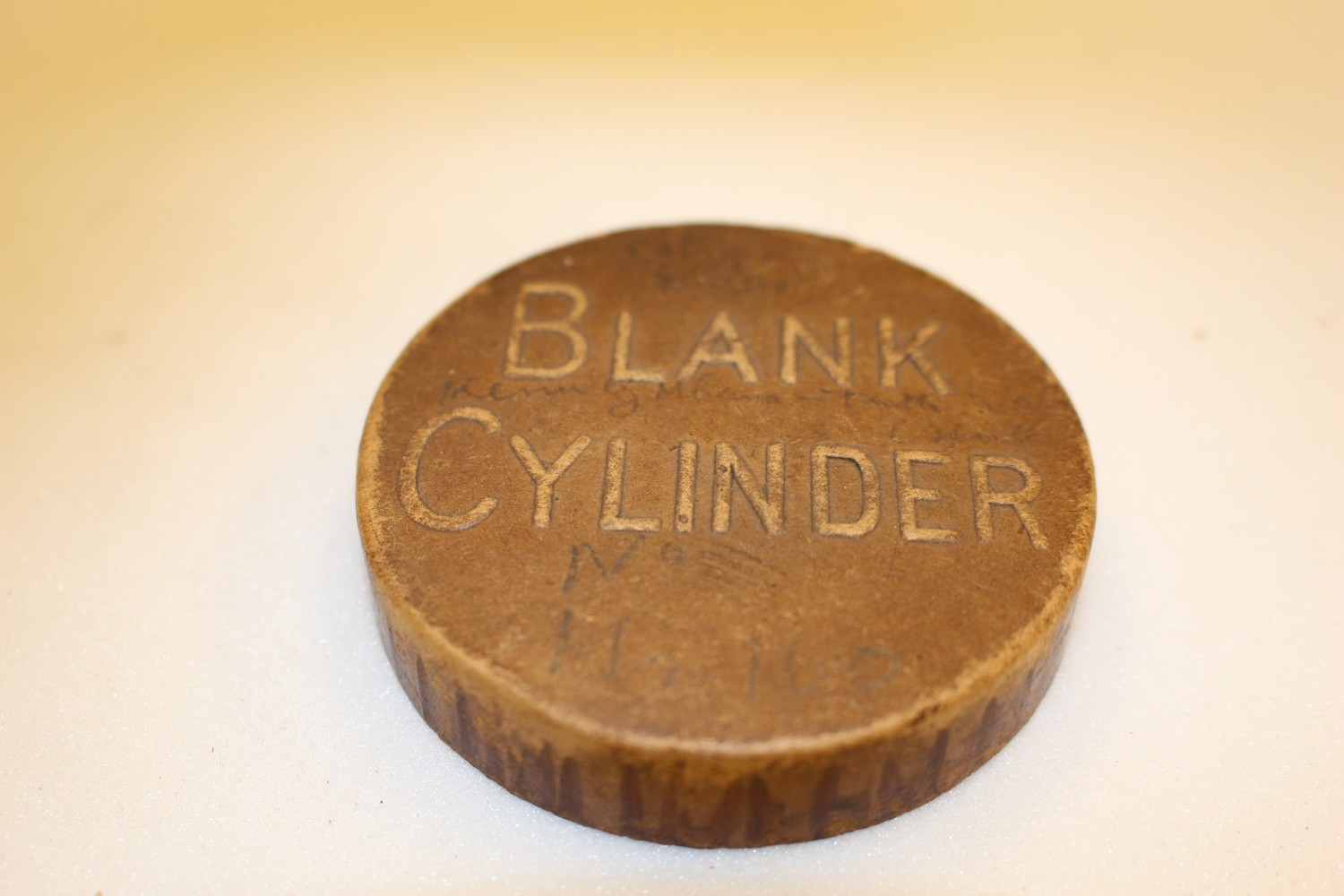   | Notes on this recording can be found in A.M. Hocart's undated manuscript 'Music' in MS-Papers-0060, Alexander Turnbull Library, Wellington, New Zealand. | |||||
| C108/382 | Ghoni Simbo [2] | Mbana (singer, male); Leoki (singer, male) | Simbo Island, Western Province, British Solomon Islands Protectorate | 14 May 1908 – 05 January 1909 | 1. Unaccompanied male vocal group. This is a goni song, a traditional song or genre on Simbo. | Simbo culture, Solomon Islands | Reasonable quality but short recording due to broken cylinder. | Simbo | Field recordings | Hocart, Arthur Maurice (1883-1939); Rivers, William Halse Rivers (1864-1922) | 1'25" | Percy Sladen Trust Expedition to the Solomon Islands, 1908 | Brown wax cylinder | WHR Rivers and Arthur M Hocart 1908 New Georgia Group, British Solomon Islands Protectorate Cylinder Collection | British Library | 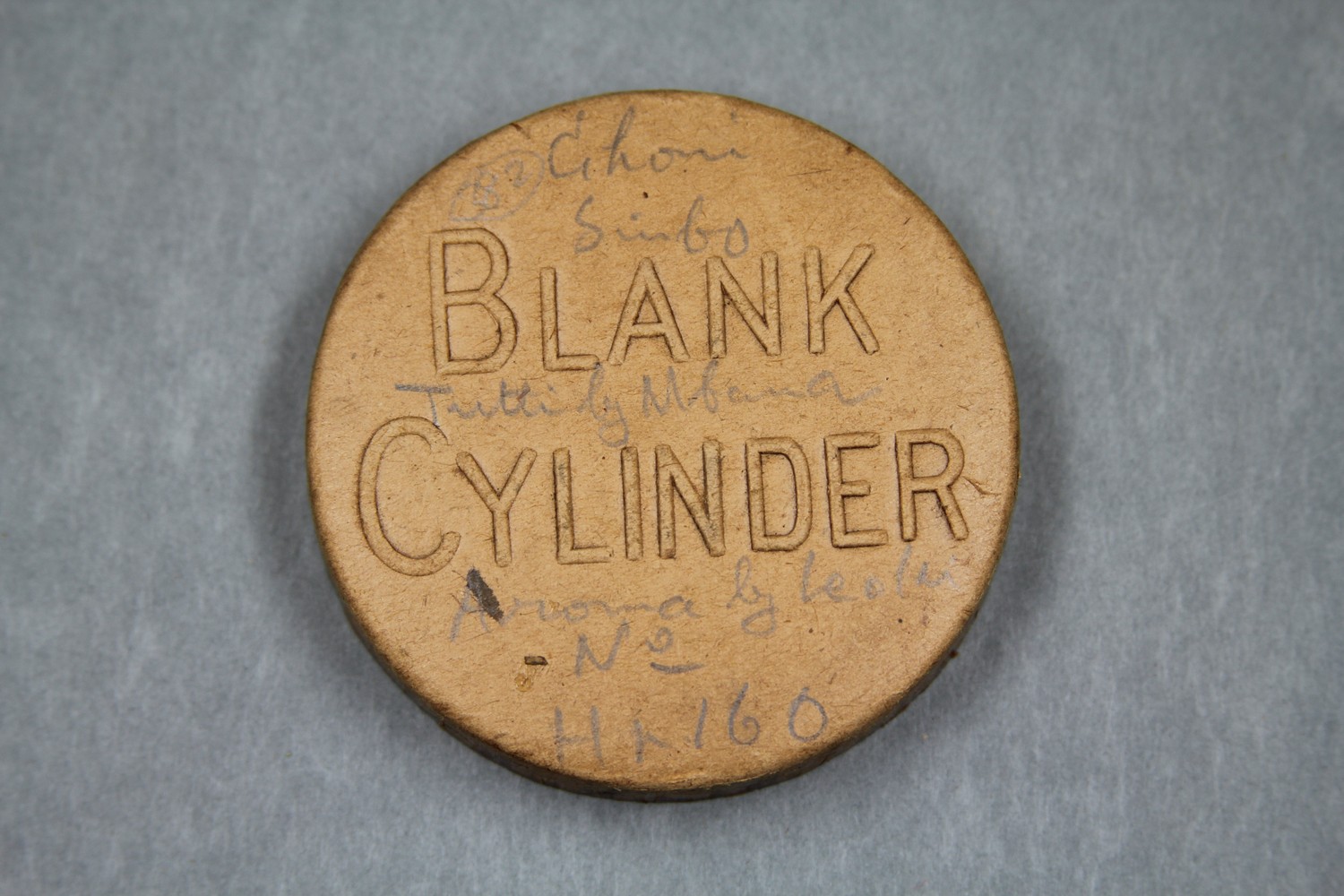  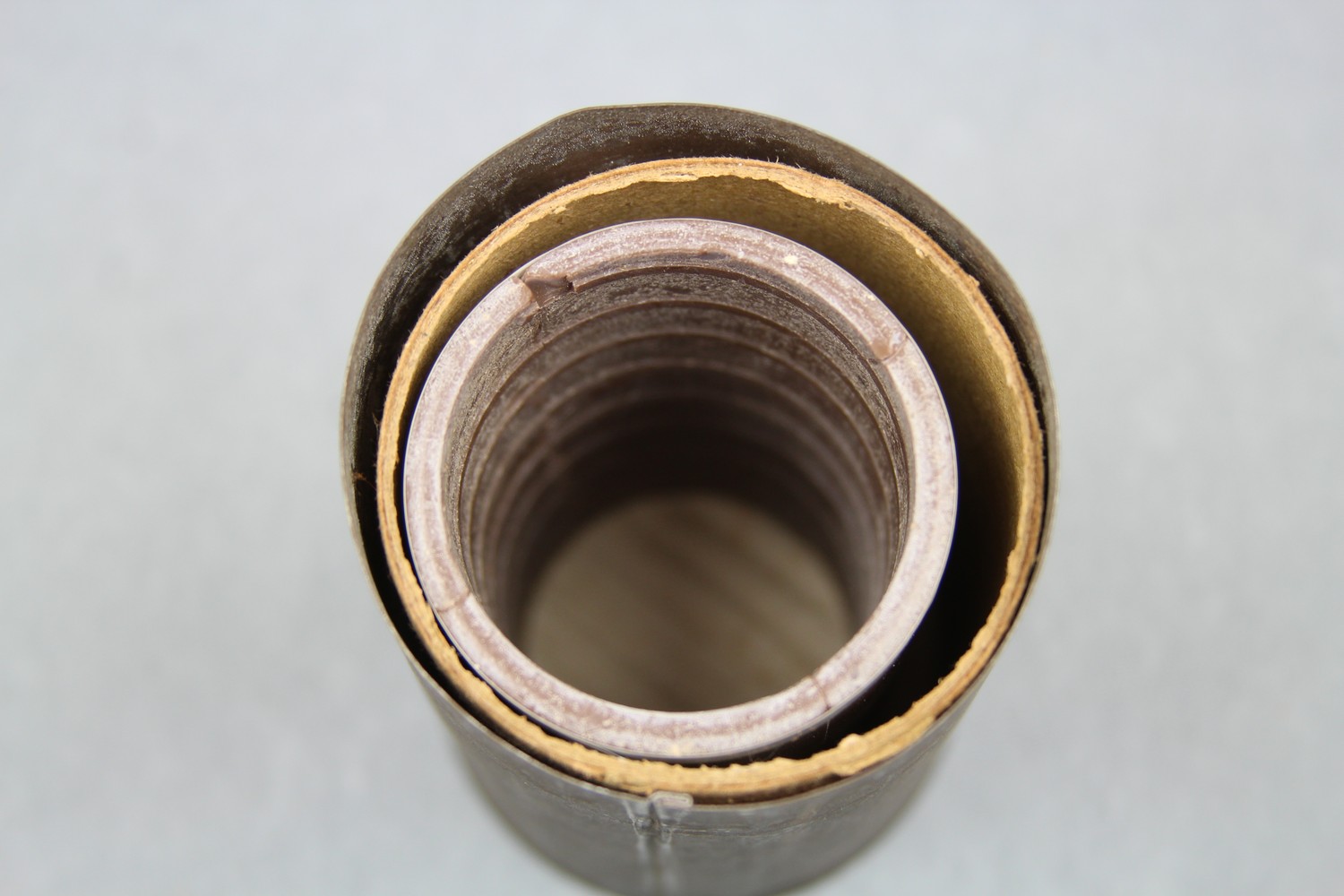    | Notes on this recording can be found in A.M. Hocart's undated manuscript 'Music' in MS-Papers-0060, Alexander Turnbull Library, Wellington, New Zealand. | |||||
| C108/773 | Wa Take and Wurawura | Unidentified (chorus) | Simbo Island, Western Province, British Solomon Islands Protectorate | 14 May 1908 – 05 January 1909 | 1. Ref note. 2. Announcement: "Wa Take[?]". 3. Unaccompanied choir singing in harmony. 4. Ref note. 5. Announcement: "Wurawura". 6. Choir. | Simbo culture, Solomon Islands | Reasonable quality recording but with heavy surface noise. | Simbo | Field recordings | Hocart, Arthur Maurice (1883-1939); Rivers, William Halse Rivers (1864-1922) | 2'26" | Percy Sladen Trust Expedition to the Solomon Islands, 1908 | Black wax cylinder | WHR Rivers and Arthur M Hocart 1908 New Georgia Group, British Solomon Islands Protectorate Cylinder Collection | British Library | 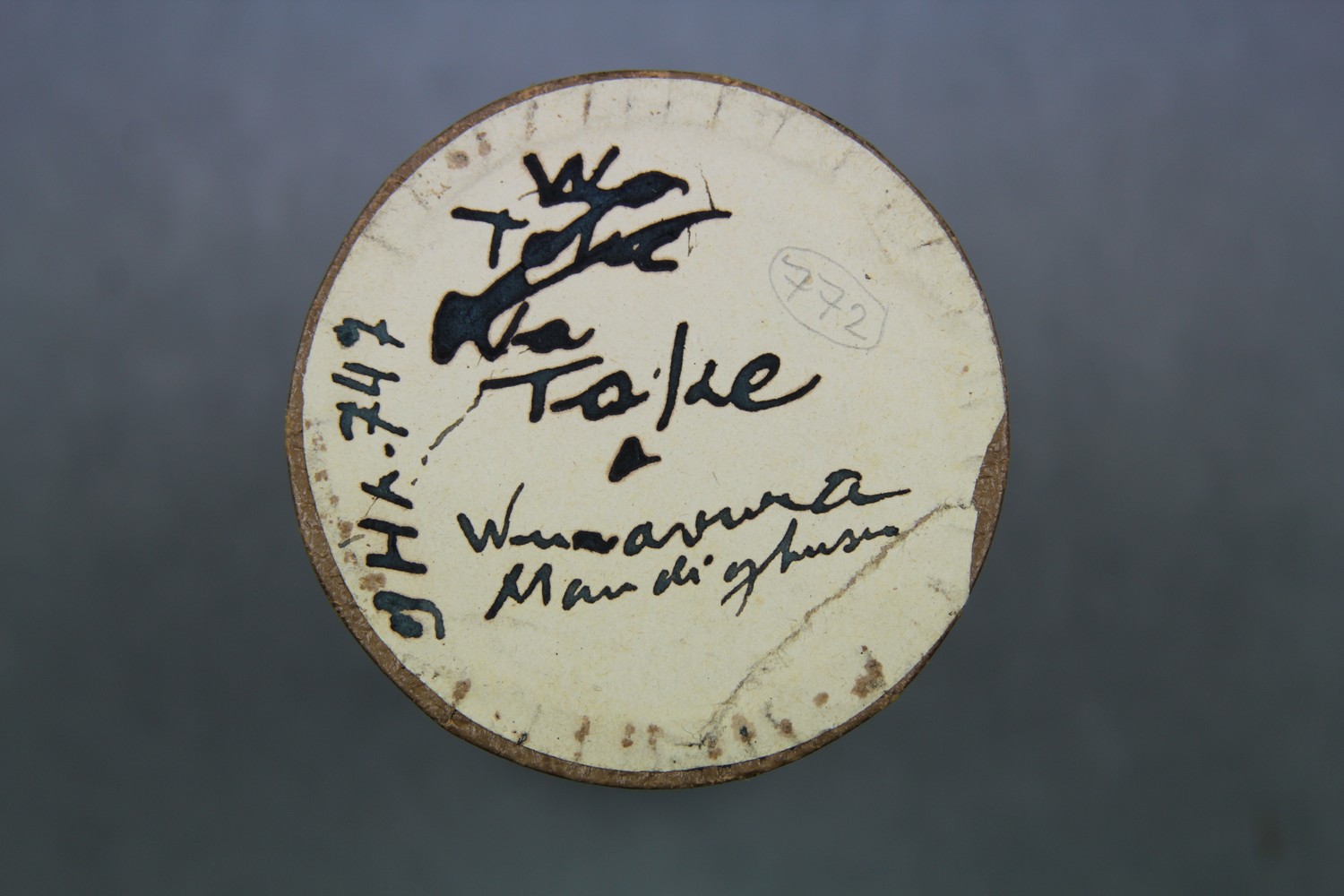      | Notes on this recording can be found in A.M. Hocart's undated manuscript 'Music' in MS-Papers-0060, Alexander Turnbull Library, Wellington, New Zealand. | |||||
| C108/376 | No 1. Ranongga | Unidentified (aerophones) | Simbo Island, Western Province, British Solomon Islands Protectorate | 14 May 1908 – 13 June 1908 | 1. Aerophones. This is probably a song from Ranongga. | Ranongga culture, Solomon Islands | Reasonable quality recording but with surface noise due to cracked cylinder. | Field recordings | Rivers, William Halse Rivers (1864-1922); Hocart, Arthur Maurice, (1883–1939) | 2'06" | Percy Sladen Trust Expedition to the Solomon Islands, 1908 | Brown wax cylinder | WHR Rivers and Arthur M Hocart 1908 New Georgia Group, British Solomon Islands Protectorate Cylinder Collection | British Library |       | These cylinders are referenced in WHR Rivers' Field notes (12070-12073). In: Haddon Papers 12000-12086. W.H.R. Rivers Collection. Box 129. Rare Manuscripts Collection, Cambridge University Library. | ||||||
| C108/378 | No 7. Simbo | Pandanjiru (performer, male); Mbana (performer, male) | Simbo Island, Western Province, British Solomon Islands Protectorate | 13 June 1908 | 1. Ref note. 2. Aerophones (possibly bamboo flutes) playing long notes in harmony. This is probably a tune called meru-meru, played on a Keivu (type of flute). | Simbo culture, Solomon Islands | Reasonable quality recording but with surface noise due to cracked and bandaged cylinder. | Field recordings | Rivers, William Halse Rivers (1864-1922); Hocart, Arthur Maurice, (1883–1939) | 2'33" | Percy Sladen Trust Expedition to the Solomon Islands, 1908 | Brown wax cylinder | WHR Rivers and Arthur M Hocart 1908 New Georgia Group, British Solomon Islands Protectorate Cylinder Collection | British Library |  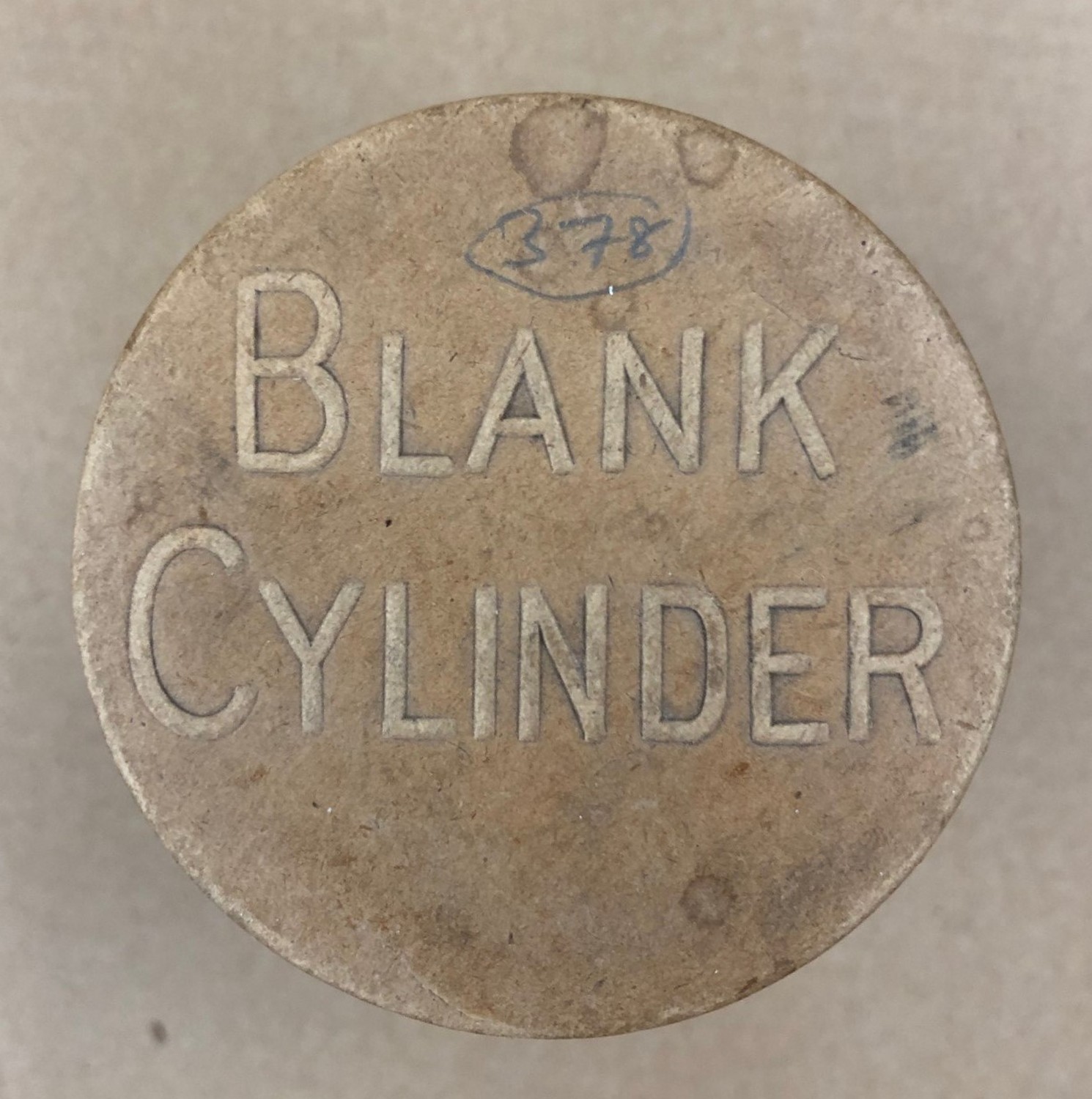     | These cylinders are referenced in WHR Rivers' Field notes (12070-12073). In: Haddon Papers 12000-12086. W.H.R. Rivers Collection. Box 129. Rare Manuscripts Collection, Cambridge University Library. |
Cylinders C108/376-378 have minimal information on their lids, just a number and a place name, although C108/378 has an extra two lines noting “same as No. 6 / nearer phono [?]”. This information is written in Rivers’ handwriting, and the numbering, handwriting and location are a match to the information recorded on pages 452-3 and 502-3 of Rivers’ fieldnotes. However, the numbering system does not seem to match up with either of the numbering systems used on the cylinder group C108/1406-1414. For example, the label on C108/377 is “No. 5. Ranongga”. Cylinder C108/1407 has a note in pencil on the lid that it is “No. 5 Dr Rivers. Poor”, but it is a recording of panpipes, whereas No. 5 / C108/377 is described as a song.
C108/381, 382 and 773 were almost certainly recorded by Hocart. The handwriting on the cylinder lids matches that used in Hocart’s fieldnotes, and the information also correlates to Hocart’s fieldnotes. It is possible that Rivers assisted him in making the recordings. The cylinder lids do not have any red ink markings or labels on them, indicating that they may not have been part of the Frazer collection of cylinders at Cambridge University. It is not clear how they came into the British Institute of Recorded Sound.
The nine cylinder lids of C108/1406-1414 all have a number and “Solomon Islands” written in red ink, and some also have “Dr Rivers” in red ink in the same handwriting. These labels are known in the British Library as Frazer numbers, but we have decided to call them red ink labels as they are not just numbers, and were probably not written by James Frazer. They may have been written by Charles Myers.1Charles Samuel Myers (1873-1946) was an English physician, psychologist, and accomplished musician. He visited the Torres Strait Islands with the Cambridge Anthropological Expedition in 1898, and was responsible for many of the recordings made there. Later, he undertook pioneering comparative ethnomusicology work on Torres Strait, Sarawak and Vedda (Sri Lanka) music. He may have been responsible for gathering together and storing the cylinders that became known as the Sir James Frazer collection. These same lids also have another number and “Dr Rivers” on them, in pencil and probably in different handwriting. The pencil numbering system indicates that these were once part of a group of 25 cylinders. The red ink label indicates that three of the cylinders are duplicates; it is not known whether this means that they are repeats of the same or similar tracks recorded on other cylinders, or whether they were pantographic copies.2Pantographic copying involved linking two phonographs by mechanical means so that whilst one machine played a cylinder, the other recorded the same tune onto a blank wax cylinder. This way of duplicating cylinders was labour-intensive, and caused wear to the master copy, but did not involve its destruction. The galvano method of cylinder duplication destroyed the original.
There is very little additional information on the lids. Two of the recordings include an announcement that indicates they were made on Simbo. The cylinders probably came into the Sir James Frazer collection from Rivers. Tim Thomas, an archaeologist at the University of Otago, commented that “the pencil handwriting on these labels [on the cylinder box lids] is not that of Rivers, Green or Hocart” (Thomas email to Barnecutt 24 November 2020).
It is possible that Hocart, or Rivers, or both, recorded these cylinders. Hocart kept extensive handwritten fieldnotes during his time in the Solomon Islands, and Thomas furnished us with information relevant to the recordings. Hocart mentioned recording music onto wax cylinders in his Simbo Island field notebook (p. 510). Thomas notes that Hocart was not systematic in recording the date in his field notebooks, although there are some dates recorded. At some point after he left the Solomon Islands, Hocart typed a collection of drafts for a book that was never published. This includes the seven-page manuscript “Music”. Rivers also kept notes, although these mostly focus on genealogical information.3https://tiaki.natlib.govt.nz/#details=ecatalogue.9564 Thomas identified Rivers’ journal notes in the Haddon papers in Cambridge University Library, where they had been misattributed as notes from the Torres Strait (Rivers 1908). The discovery of these notes enabled Thomas to identify the Rivers’ cylinders C108/376-378.
The announcements for C108/1406 and C108/1409 indicate that these are goni, a traditional song or genre on Simbo. These two recordings both feature what sound like female vocal groups. Writing on the cylinder lid of C108/1411 indicates that this was probably also a goni song, although further investigation is needed.
In his manuscript “Music”, Hocart noted that “goni” is the name of a song; his description indicates that goni is both the name of the song or genre and a certain type of three-part polyphonic singing:
Singing is normally in three parts: the kenu (first) who sings often, if not always, in a falsetto voice. The tuti (following) joins in after a time with a hum, almost immediately followed by the roma. That is at least in the song called goni … There were two styles of Gonigoni: the Mandegusu style & the new one (1. Lupa; 2. Ndau-Lena; 3. Mali) there was an old style which we suppose to be the same as the Mandegusu one: it was sung by the same singers. (Hocart Music, pages 1–2)
In this manuscript, Hocart consistently put the names of the performers in brackets after listing the name of the song, numbering these to identify the kenu, tuti, and roma parts. Thomas notes that Lupa, Ndau-Lena, and Mali were the names of three women from Simbo mentioned in Hocart’s field notebook. It is possible that Lupa, Ndau-Lena, and Mali performed in these two recordings.
The announcement for C108/1406, transcribed in SAMI as “Yoni yoni kamerani”, indicates that it is the “old style” version of the goni song discussed in Hocart’s “Music” manuscript. Thomas notes that kame rane means the olden days (Thomas, email to Barnecutt 24 November 2020); Hocart noted that ria kami rani are people of old, ancestors, forefathers (1922:296). The announcement for C108/1409 does not include the words kame rane, so this may be the “new” style of gonimentioned in Hocart’s “Music” manuscript.
Information on the lids of C108/381 and C108/382 indicate that they are also goni. The lid for C108/381 indicates that Mbana sang the kenu part; the name of the performer of the tuti is not legible. The word “ghoni” is written on the lid of C108/382, with Mbana singing the “tutti” or tuti part, and Leoki singing the “aroma” or roma part. Hocart photographed Leoki playing an instrument known as suke; there is more information about the suke below.
The second track on C108/773, “Wurawura”, is presumably a version of the song type vuravura, noted by Hocart in his “Music” manuscript (p. 2). He did not record any other information about it, but did note that the performers were Manggu, Lelo, and Lupavuto. It is likely that these are the performers on this recording.
The announcements on C108/1410 and for the second track on C108/1413 indicate that these are Mbanyata songs; SAMI records the announcement as “Banietta”. Baniata is a language area on the south-west of Rendova Island, but Hocart listed “The Mbanyata” as a Simbo song of three polyphonic parts in his “Music” manuscript (Hocart “Music” page 1), noting that it “was brought over by Mbanyata men”.4Tim Thomas confirmed that Mbanyata is the same word as Baniata in Simbo (Thomas email to Barnecutt, 24 November 2020). Mbaniata is also listed as an alternative name for the Touo [tqu] / Baniata language in Eberhard et al 2021:24 He noted the singers as Mena, Watasa, and an unnamed person. C108/1410 probably features a male vocal group, whereas the second track of C108/1413 sounds like a vocal solo. It is not clear whether the language of the song is Simbo or Baniata / Touo.
The announcement for the first track on C108/1413 identifies it as the Kera ite song; this genre was listed by Hocart in his “Music” manuscript. He noted that it meant ‘small song” and that it was “probably high pitched”. In the manuscript, he listed the performers as Ungga, Tuga, and Ruti (Hocart “Music” page 1), but we do not know which recording, if any, this relates to. The recording is probably of a male vocal group. It is likely that the announcement for C108/1412 also notes the recording as Kera ite, but the sound quality is poor.
Cylinder C108/1407 has two tracks of panpipe music. The announcement at the start is unclear, and it is not known whether the instrument played is the suke of Simbo. Hocart noted that at specific celebratory dances, men would “take their bassoons (suke) and blow them, dancing round as they go” (Hocart 1931:318), but the designation as a “bassoon” is organologically incorrect. As Hocart noted, the suke consists “of two bamboo pipes, the thicker called kevu (bamboo), and the thinner one ṅopa … The kevu is open at the base, and is covered over a length of about 26 mm. with tita gum. The ṅopa is made of two pieces of bamboo joined together with tita gum. It has a mouthpiece about 56 mm. long, consisting of a cone of wood covered with tita” (1931:318). Niles notes that the kevu is blown as a trumpet (with vibrating lips; in the photo below on the right); the ṅopa is blown as a flute (by directing a stream of air over the rim; in the photo below on the left) (Don Niles, email to Barnecutt 13 March 2021).
Vella Lavella Recordings
The recordings made in Vella Lavella, C108/770-772, were probably made in the month of September 1908, when Rivers and Hocart were travelling around the island.
These cylinders were almost certainly recorded by Hocart. The handwriting on the cylinder lids matches that used in Hocart’s fieldnotes, and the information also correlates to Hocart’s fieldnotes. It is possible that Rivers assisted him in making the recordings. The cylinder lids do not have any red ink markings or labels on them, indicating that they may not have been part of the Frazer collection of cylinders at Cambridge University. It is not clear how they came into the British Institute of Recorded Sound.
Information on the cylinder lids indicate that these recordings were made in Ndovele, a region on the northern tip of the island of Vella Lavella, around the village of Liangai (Bennett 2012:3). The language of Vella Lavella is Bilua [blb], with around 9000 speakers (Eberhard et al 2021:12).
| British Library shelfmark | Recording title | Performer name | Recording location | Recording date | Content description | Performer description | Recording notes | Languages | Genre | Recordist | Recording length | Recording trip | Description of cylinder | Collection title | Cylinder location | Images of cylinder containers / documentation | Related print publication: | Related print publication: | Related print publication: | Related print publication: | Related print publication: | Related print publication: |
|---|---|---|---|---|---|---|---|---|---|---|---|---|---|---|---|---|---|---|---|---|---|---|
| C108/771 | Mbaruku [2] | Munjoro (flute, male) | Ndovele, Vella Lavella, Western Province, British Solomon Islands Protectorate | 01 September 1908 – 30 September 1908 | 1. Ref note. 2. Flute duet. This is a flute duet known as "Mbaruku" - the pigeon | Ndovele culture, Solomon Islands | Poor quality recording with weak signal and surface noise. | Field recordings | Hocart, Arthur Maurice (1883-1939); Rivers, William Halse Rivers (1864-1922) | 2'14" | Percy Sladen Trust Expedition to the Solomon Islands, 1908 | Black wax cylinder | WHR Rivers and Arthur M Hocart 1908 New Georgia Group, British Solomon Islands Protectorate Cylinder Collection | British Library | 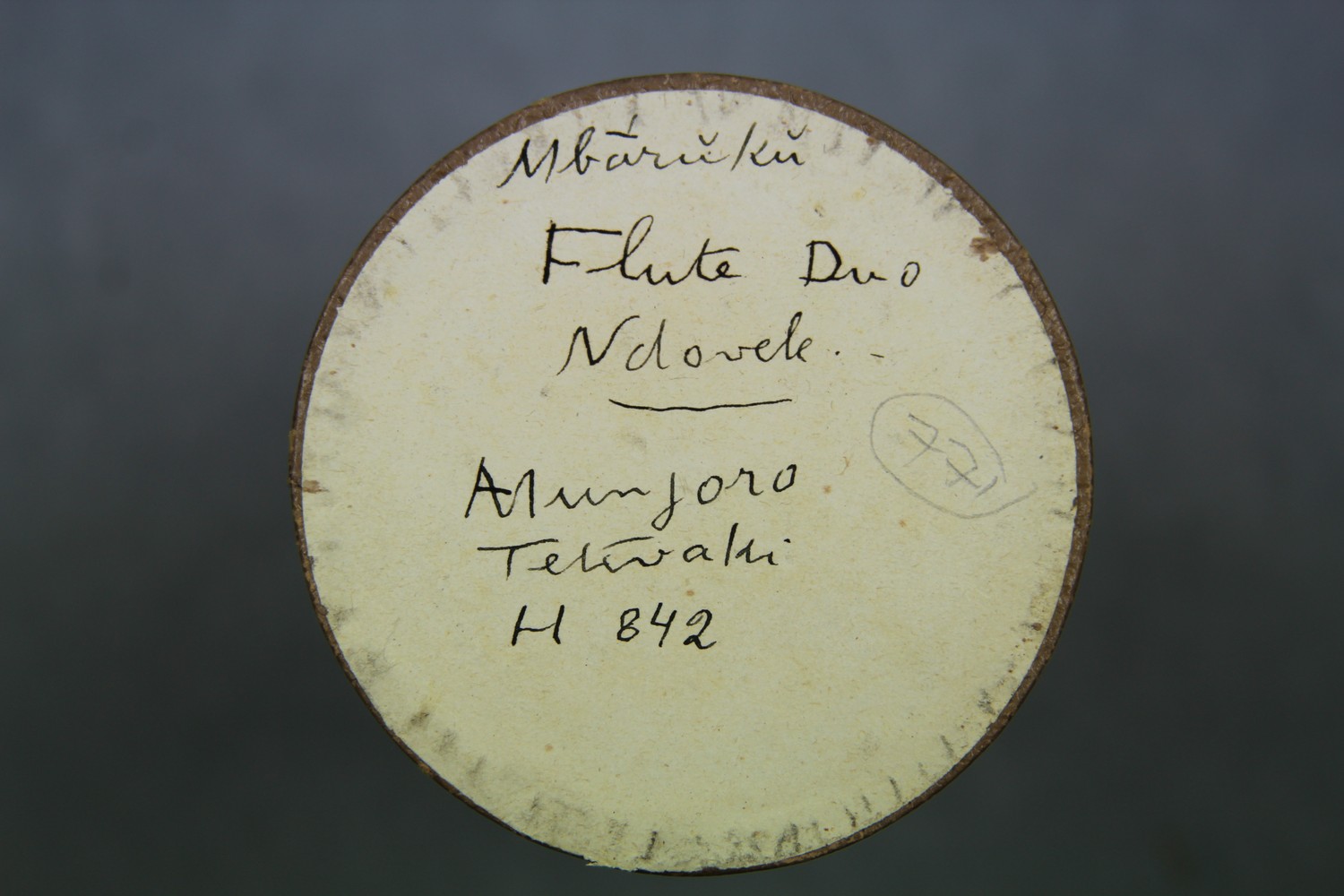      | Notes on this recording can be found in A.M. Hocart's Fieldnotes (pg 842) and in his undated manuscript 'Music' in MS-Papers-0060, Alexander Turnbull Library, Wellington, New Zealand | ||||||
| C108/772 | Sirumbai | Munjoro (singer, male) | Ndovele, Vella Lavella, Western Province, British Solomon Islands Protectorate | 01 September 1908 – 30 September 1908 | 1. Ref tone. 2. Male vocal solo. 3. Announcement: "Sirumbai, Ndowele". This song is titled "Sirumbai" and is from the village of Sirumbai. | Ndovele culture, Solomon Islands | Poor quality recording with weak signal and surface noise. | Field recordings | Hocart, Arthur Maurice (1883-1939); Rivers, William Halse Rivers (1864-1922) | 2'27" | Percy Sladen Trust Expedition to the Solomon Islands, 1908 | Black wax cylinder | WHR Rivers and Arthur M Hocart 1908 New Georgia Group, British Solomon Islands Protectorate Cylinder Collection | British Library | 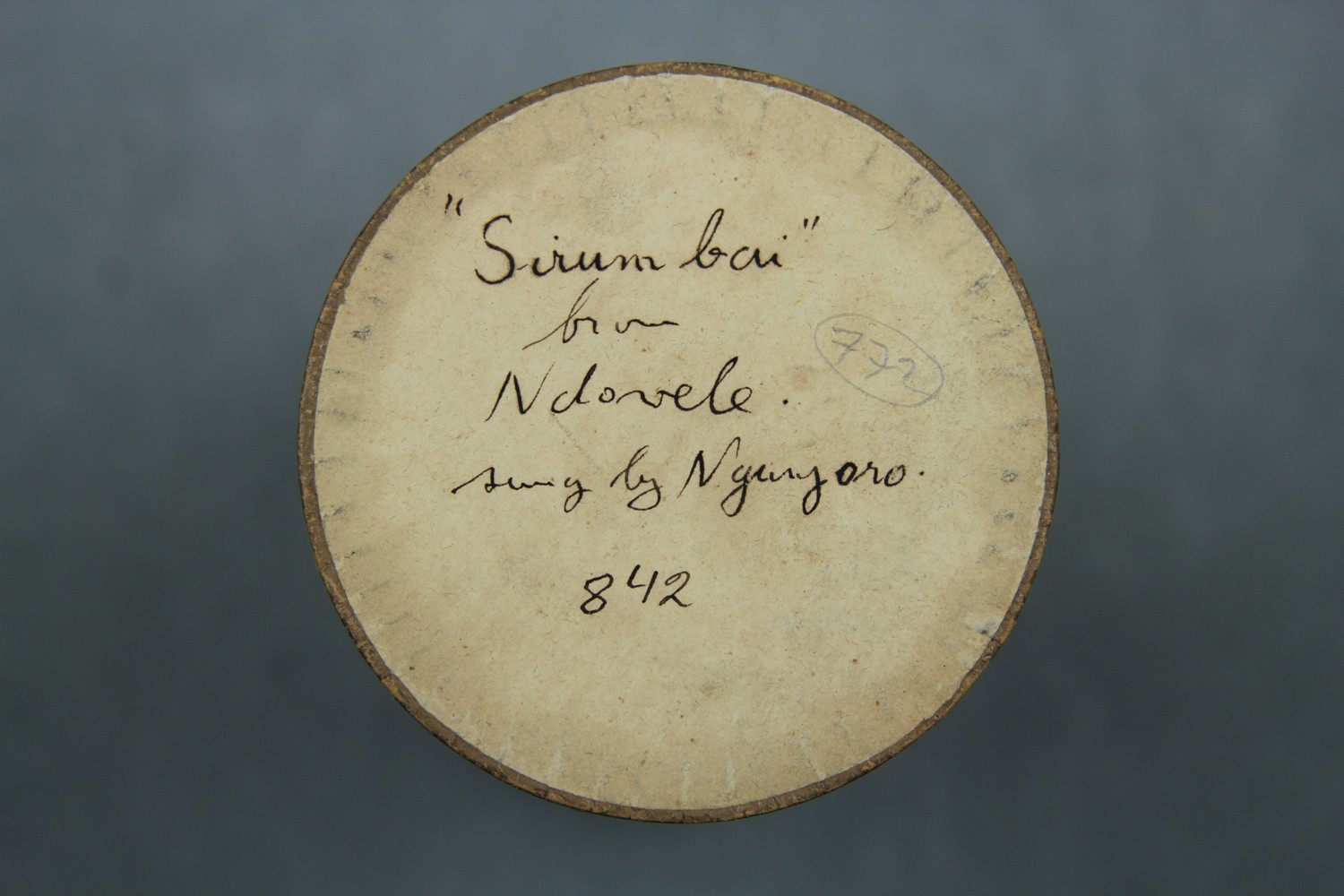      | Notes on this recording can be found in A.M. Hocart's Fieldnotes (pg 842) and in his undated manuscript 'Music' in MS-Papers-0060, Alexander Turnbull Library, Wellington, New Zealand | ||||||
| C108/770 | Mbaruku [1] | Unidentified | The contents of this cylinder do not relate to the description on its box, probably due to an accidental mix-up. | Percy Sladen Trust Expedition to the Solomon Islands, 1908 | Black wax cylinder | WHR Rivers and Arthur M Hocart 1908 New Georgia Group, British Solomon Islands Protectorate Cylinder Collection | British Library |   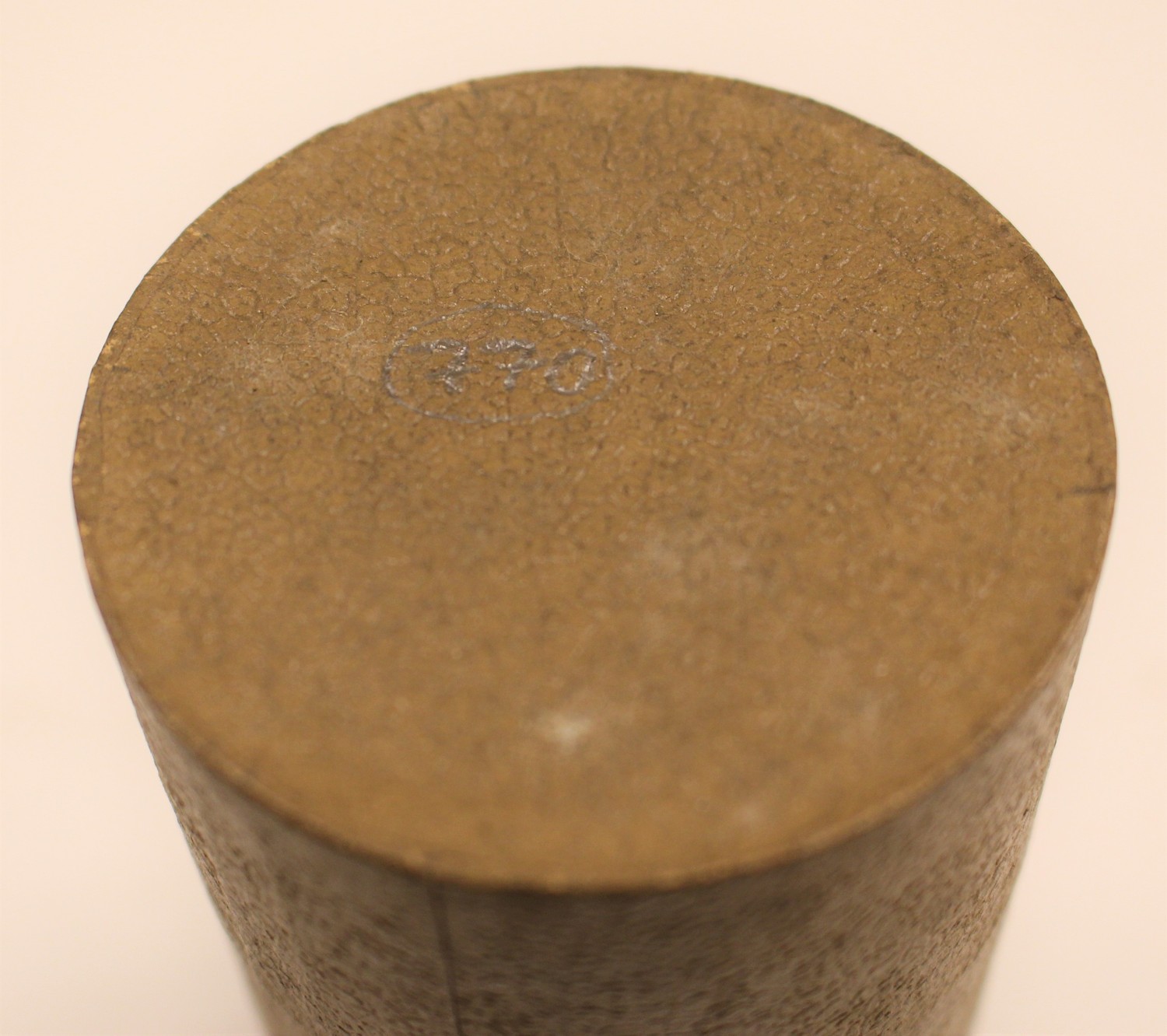 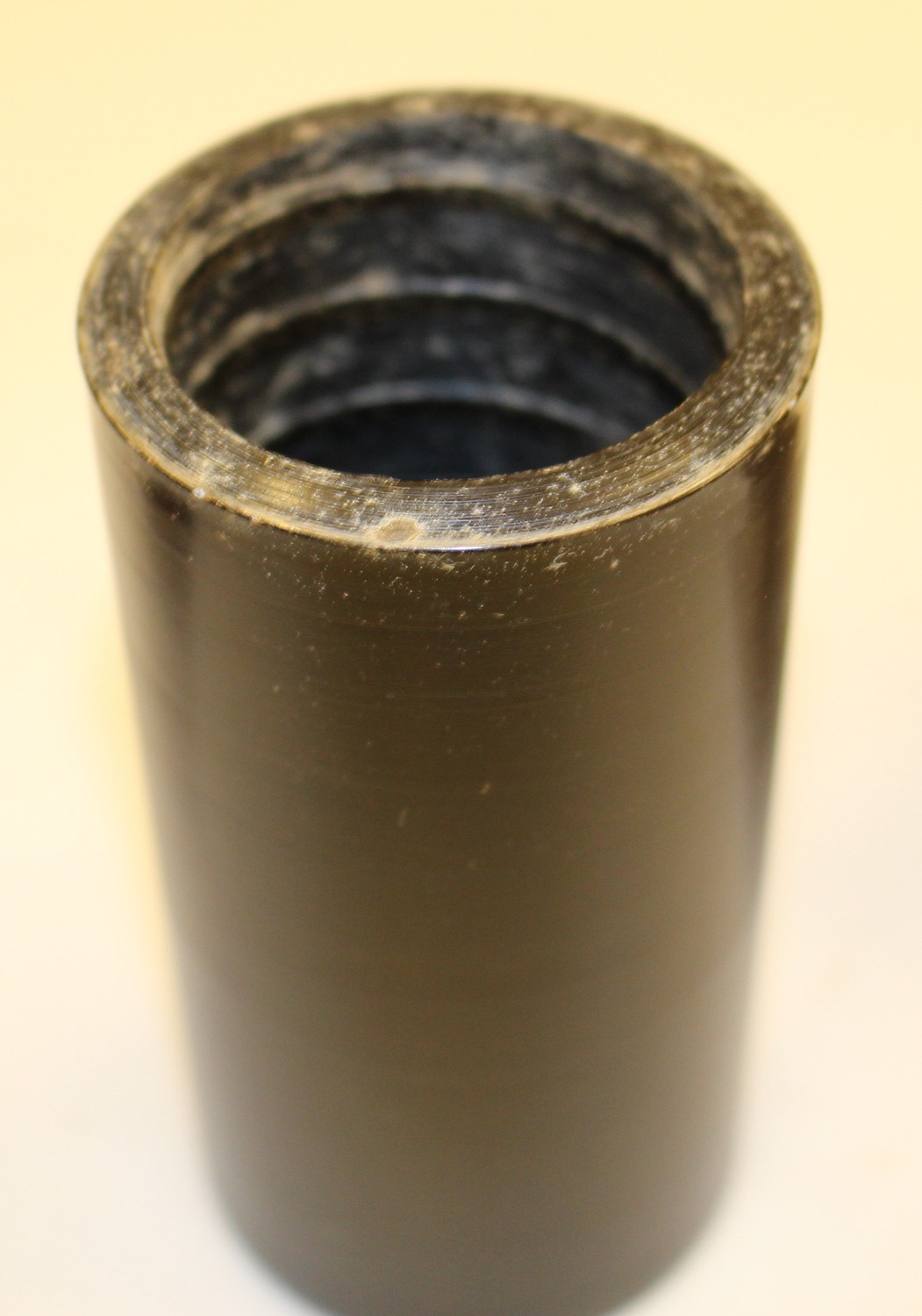   |
C108/772 was recorded on the same occasion as C108/770 and C108/771, as noted in Hocart’s fieldnotes, where he described it as “”Sirumbai” a song from Sirumbai sung by Munjoro, Ndovele” (p. 842, Thomas email to Barnecutt, 24 November 2020). Sirumbai is a place on the northeast coast of Vella Lavella; there are a number of photographs of individuals from Sirumbai from the 1908 expedition in Cambridge’s Museum of Archaeology and Anthropology.5e.g. N.59606.WHR https://collections.maa.cam.ac.uk/photographs/352877
It is not clear why the handwriting on the cylinder lid appears to spell the name as Ngunyoro. Munjoro is clearly named as the performer on page 842 of Hocart’s fieldnotes, and is cited as an informant elsewhere. On page 838 of Hocart’s fieldnotes, Munjoro, son of Lavaito from Ndovele, is listed with the results of a colour vision test. The name Ngunjoro occurs on the same page over a list of local colour names. This may suggest that they were two different people and Hocart simply confused their names when writing on the cylinder lid. However, it seems more likely that both spellings related to the same person, but that Hocart was unsure of the best way of rendering the name orthographically, and vacillated between spellings (Thomas, emails to Barnecutt, 16 August 2021). Hocart also spelt his name Munyoro.6On the reverse side of the photo P.69307.WHR in the Cambridge Museum of Archaeology and Anthropology, Hocart wrote “Munyoro and his Ulivanga, Ndovele”.
Performers
A number of performers are noted on the cylinder lid labels, but closer scrutiny of this information is needed. From Simbo, two men named Mbana and Leoki are noted as singers. From Ndovele, Munjuro and Tetevaki are noted as performers. All of these men are mentioned in Hocart’s fieldnotes.7Thomas email to Barnecutt, 24 November 2020
Leoki
Leoki is mentioned in a number of Hocart’s publications; he was from the village of Narovo on Simbo (1922, 1925, 1931). Hocart described him as “the best narrator and expositor of any” and one of his “chief informants” on the island (1922:73). There are photos of him playing the suke instrument above. He was noted as a performer on C108/382.
Munjoro (also spelt Munyoro, Ngunyoro) was noted as a performer on C108/770, 771 and 772. The below photo depicts Munyoro sitting on a tree branch, with another man partially obscured in the background, next to a bonito fishing shrine known as an Ulivanga. Ulivanga is the Bilua word for bonito/skipjack tuna, and Ulivangana is the female supernatural being propitiated at the shrine. Offerings were burnt to Ulivangana because if she was not fed she would prevent men from catching fish. Like most bonito shrines this one is close to the coast, as can be seen in the photo (Thomas, email to Barnecutt, 8 October 2021).
Pandanjiru
Hocart referred to Pandanjiru as “our interpreter,” and noted that he had “a widespread reputation for the evil-eye,” which stretched as far as Roviana and Nduke (Kolombangara) (1925:232). Thomas notes that he was from the Narovo district of Simbo, and that his sister was married to Mbana, who Rivers called Banna.8Thomas email to Barnecutt 8 December 2021 He was probably a performer on C108/378.
Mbana / Mbanna / Banna
Thomas notes that these names probably all refer to the same man, who was from the Karivara district of Simbo and was married to the sister of Pandanjiru.9Thomas email to Barnecutt 8 December 2021 Hocart mentioned him once, noting that “Mbana can cure the bite of a centipede: spitting on the wound with pasapasa; the stem of the pasapasa is tied-round the ankle” (Hocart 1925:257). He was probably a performer on C108/378.
- Anonymous. 1950. ‘The Hocart Papers in the Turnbull Library’, Journal of the Polynesian Society 59, 3: 268–272.
- Bayliss-Smith, Tim. 2014. “Appendix 1.”In Edvard Hviding and Cato Berg (eds.) The Ethnographic Experiment. A. M. Hocart and W. H. R. Rivers in Island Melanesia, 1908. Oxford: Berghahn Books, 282–290.
- Crowe, Peter Russell. 1998. “Melanesia.” In Adrienne L. Kaeppler, J. W. Love, Stephen A. Wild, Don Niles, Peter Russell Crowe, Barbara B. Smith, Amy Ku’uleialoha Stillman, and Philip Hayward (eds) The Garland Encyclopedia of World Music, Vol 9. Australia and the Pacific islands. New York: Garland Publishing. pp. 991–994.
- Eberhard, David M., Gary F. Simons, and Charles D. Fennig (eds.) 2021. Ethnologue: Languages of the World. Twenty-fourth edition. Dallas, Texas: SIL International.
- Hocart, Arthur Maurice. 1922. “The Cult of the Dead in Eddystone of the Solomons.”The Journal of the Royal Anthropological Institute of Great Britain and Ireland, 52: 71–112, 259–305.
- Hocart, Arthur Maurice. 1908. Fieldnotes, pp 1–1596. [Manuscript] Hocart, Arthur Maurice 1883-1939: Papers, MS-Papers-0060. Wellington, New Zealand: Alexander Turnbull Library. Microfilmed c. 1975 by the Alexander Turnbull Library. https://tiaki.natlib.govt.nz/#details=ecatalogue.9564
- Hocart, Arthur Maurice. n.d. Music. Typescript about the music of Simbo Island. [Manuscript] Hocart, Arthur Maurice 1883-1939: Papers, MS-Papers-0060. Wellington, New Zealand: Alexander Turnbull Library. Microfilmed c. 1975 by the Alexander Turnbull Library. https://tiaki.natlib.govt.nz/#details=ecatalogue.9564
- Hocart, Arthur Maurice. n.d. Handwritten note to Berliner Phonogramm-Archiv, listing contents of the wax cylinders. Berlin: Berliner Phonogramm-Archiv.
- Hocart, Arthur Maurice. 1922. “The Cult of the Dead in Eddystone of the Solomons”. The Journal of the Royal Anthropological Institute of Great Britain and Ireland, 52: 71–112, 259–305.
- Hocart, Arthur Maurice. 1925. “Medicine and Witchcraft in Eddystone of the Solomons”. The Journal of the Royal Anthropological Institute of Great Britain and Ireland, 55:229–270.
- Hocart, Arthur Maurice. 1930. “An Anthropologist in the Solomon Islands”. The Listener.
- Hocart, Arthur Maurice. 1931. “Warfare in Eddystone of the Solomon Islands”. The Journal of the Royal Anthropological Institute of Great Britain and Ireland, 61:301–324.
- Hviding, Edvard and Cato Berg (eds). 2014. The Ethnographic Experiment. A. M. Hocart and W. H. R. Rivers in Island Melanesia, 1908. Oxford: Berghahn Books.
- Rivers, William Halse Rivers. 1908. Field notes (12073). In: Haddon Papers 12000-12086. W.H.R. Rivers Collection. Box 130. Rare Manuscripts Collection, Cambridge University Library (AJCP ref: http://nla.gov.au/nla.obj-1146092941)
- Rivers, William Halse Rivers. 1914a. Kinship and Social Organisation. London: Constable & Co. Available online at http://www.gutenberg.org/files/44728/44728-h/44728-h.htm
- Rivers, William Halse Rivers. 1914b. The History of Melanesian Society. Two volumes. Cambridge: Cambridge University Press. Available at: https://wellcomelibrary.org/item/b31362692
- Scales, Ian. 1999. Document on Hocart wax cylinders. London: British Library Sound Archive, World and Traditional Museum archives, May 1999.
- Thomas, Tim. 2014. “Objects and Photographs from the Percy Sladen Trust Expedition”. In Edvard Hviding and Cato Berg (eds). The Ethnographic Experiment. A. M. Hocart and W. H. R. Rivers in Island Melanesia, 1908. Oxford: Berghahn Books, 252–281.
- Waterhouse, J.H.L. 1949. A Roviana and English Dictionary. Sydney: Epworth Printing and Publishing House.
- Ziegler, Susanne. 2006. Die Wachszylinder des Berliner Phonogramm-Archivs. Veröffentlichungen des Ethnographischen Museums Berlin, 73. Berlin: Ethnologisches Museum, Staatliche Museen zu Berlin.









